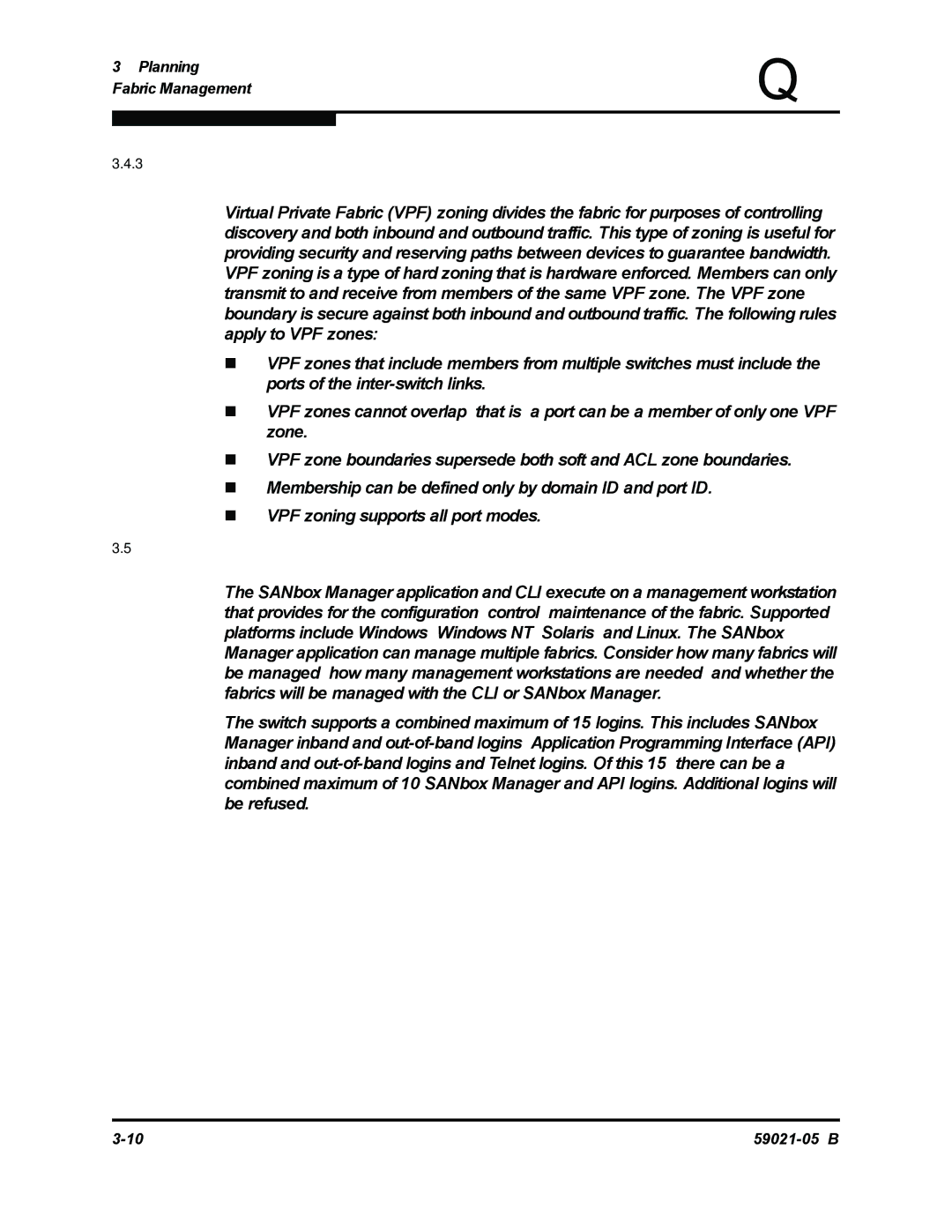
3 – Planning
Fabric Management
Q
3.4.3
Virtual Private Fabric Hard Zones
Virtual Private Fabric (VPF) zoning divides the fabric for purposes of controlling discovery and both inbound and outbound traffic. This type of zoning is useful for providing security and reserving paths between devices to guarantee bandwidth. VPF zoning is a type of hard zoning that is hardware enforced. Members can only transmit to and receive from members of the same VPF zone. The VPF zone boundary is secure against both inbound and outbound traffic. The following rules apply to VPF zones:
VPF zones that include members from multiple switches must include the ports of the
VPF zones cannot overlap; that is, a port can be a member of only one VPF zone.
VPF zone boundaries supersede both soft and ACL zone boundaries.
Membership can be defined only by domain ID and port ID.
VPF zoning supports all port modes.
3.5
Fabric Management
The SANbox Manager application and CLI execute on a management workstation that provides for the configuration, control, maintenance of the fabric. Supported platforms include Windows, Windows NT, Solaris, and Linux. The SANbox Manager application can manage multiple fabrics. Consider how many fabrics will be managed, how many management workstations are needed, and whether the fabrics will be managed with the CLI or SANbox Manager.
The switch supports a combined maximum of 15 logins. This includes SANbox Manager inband and
